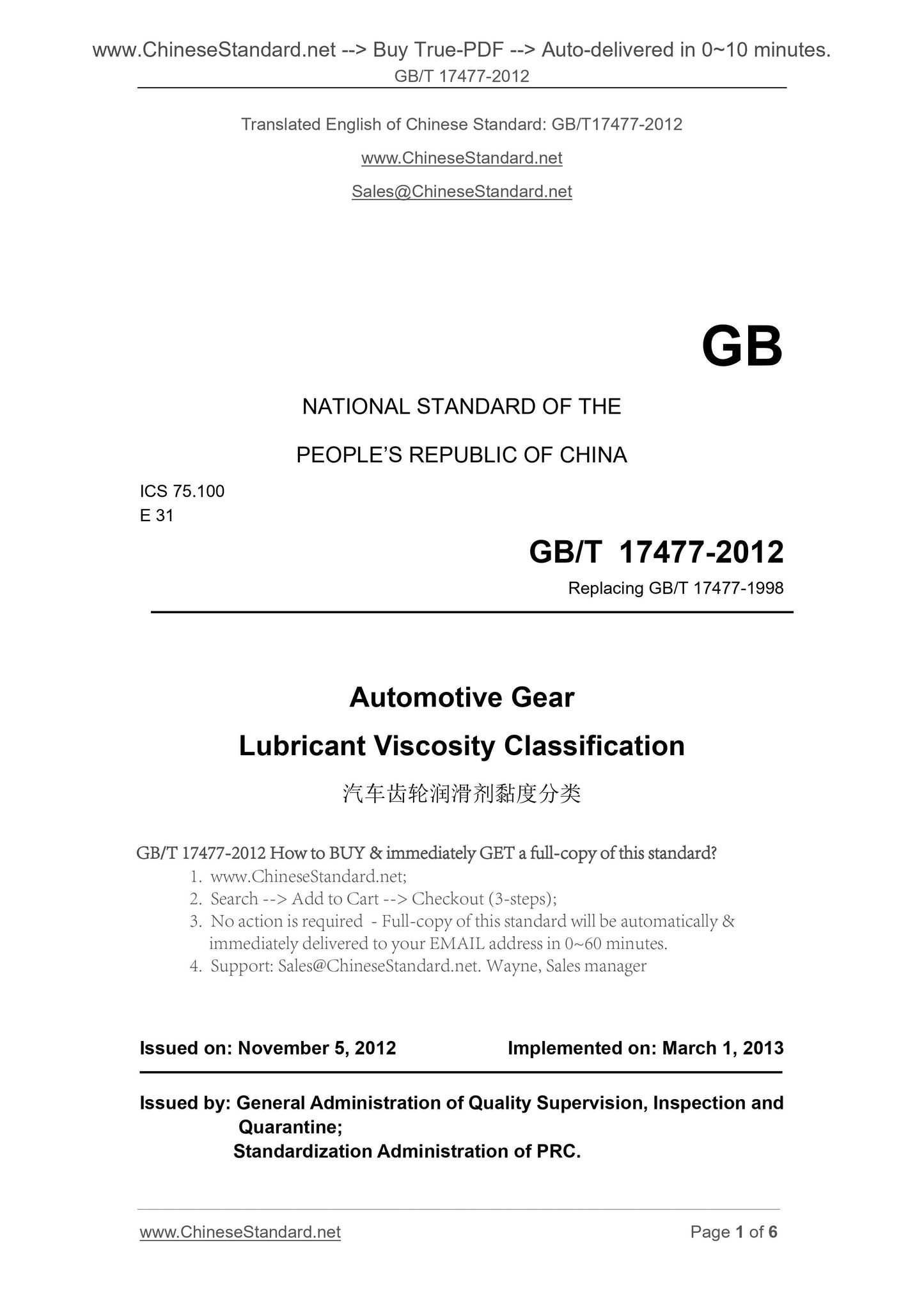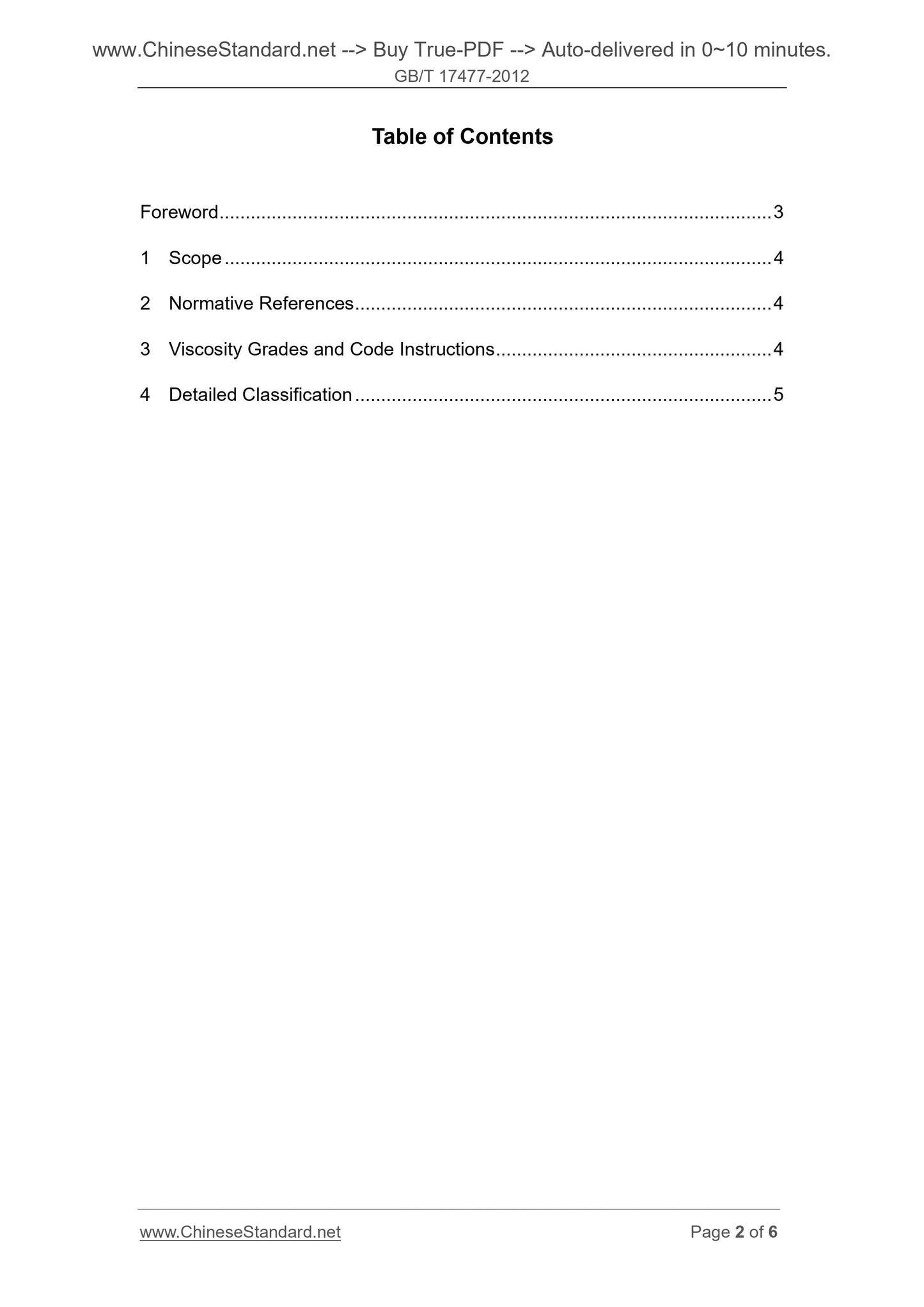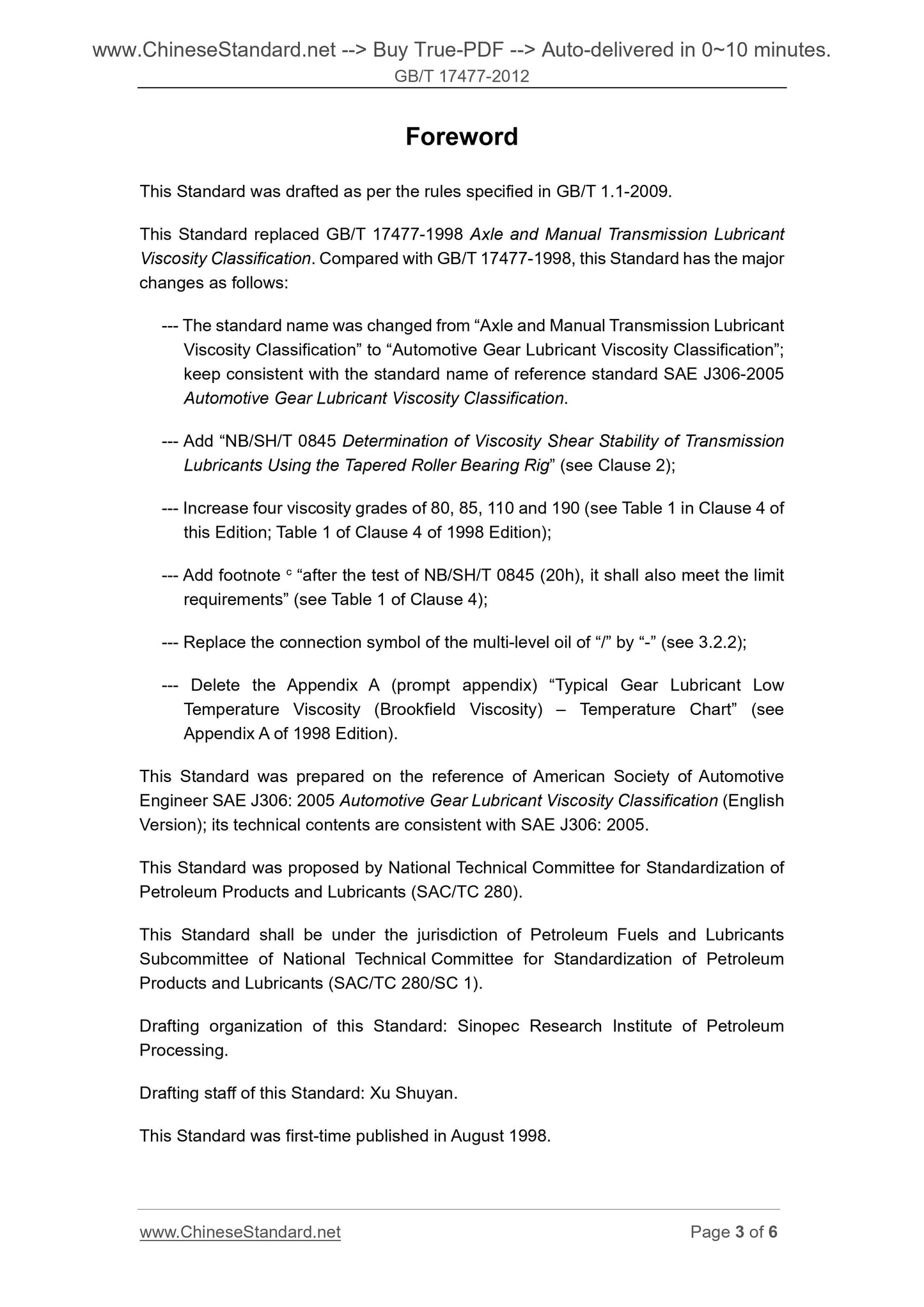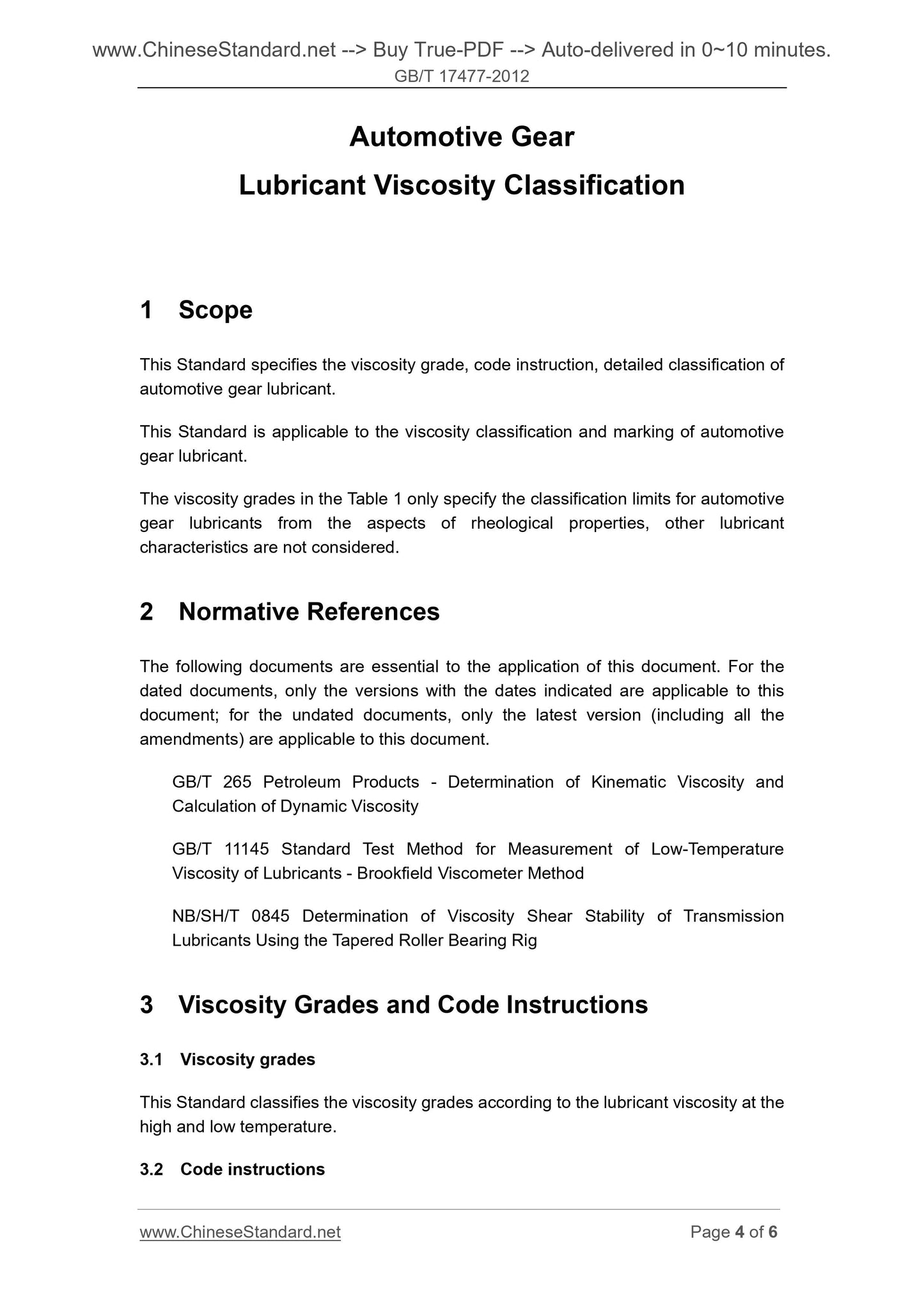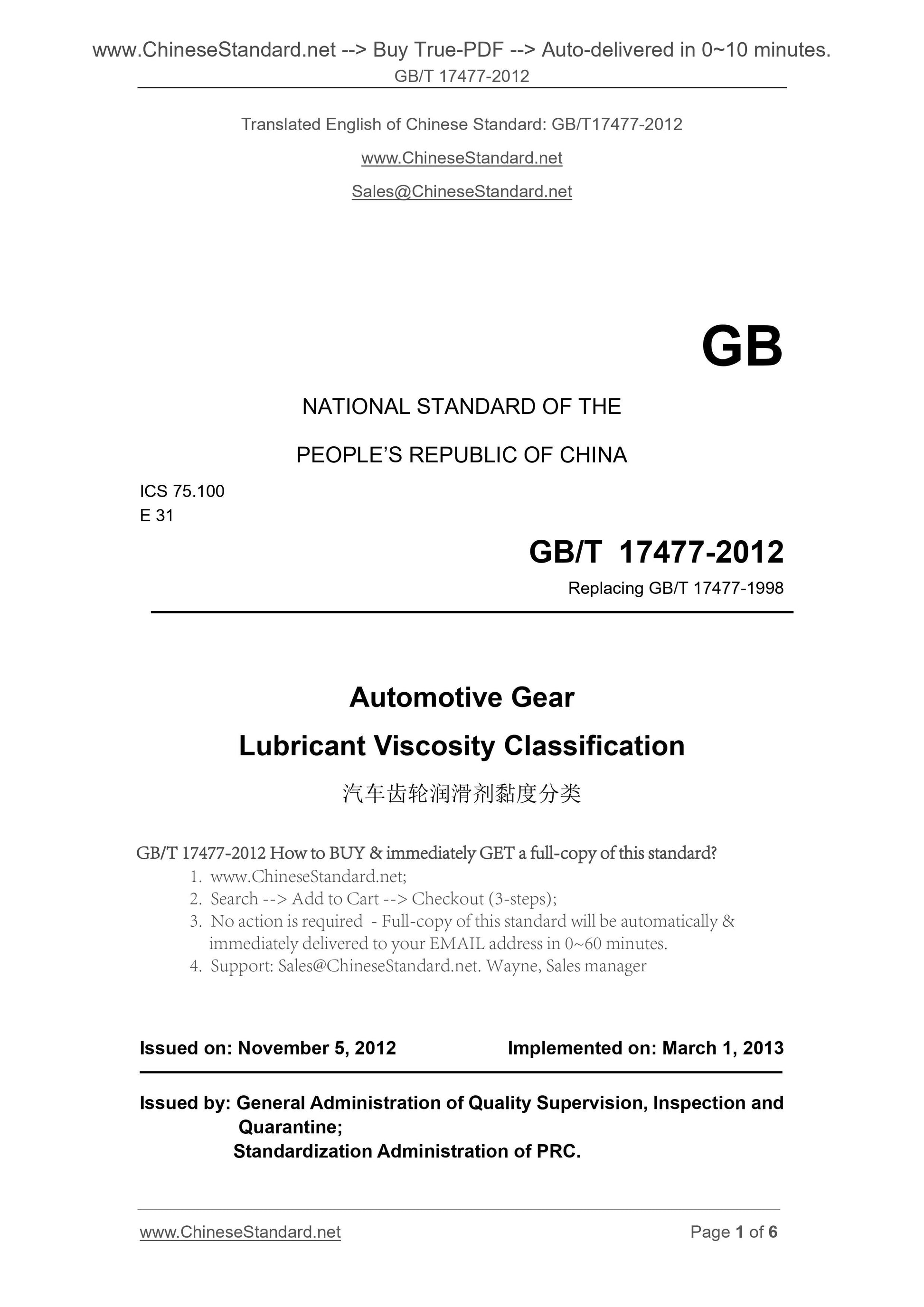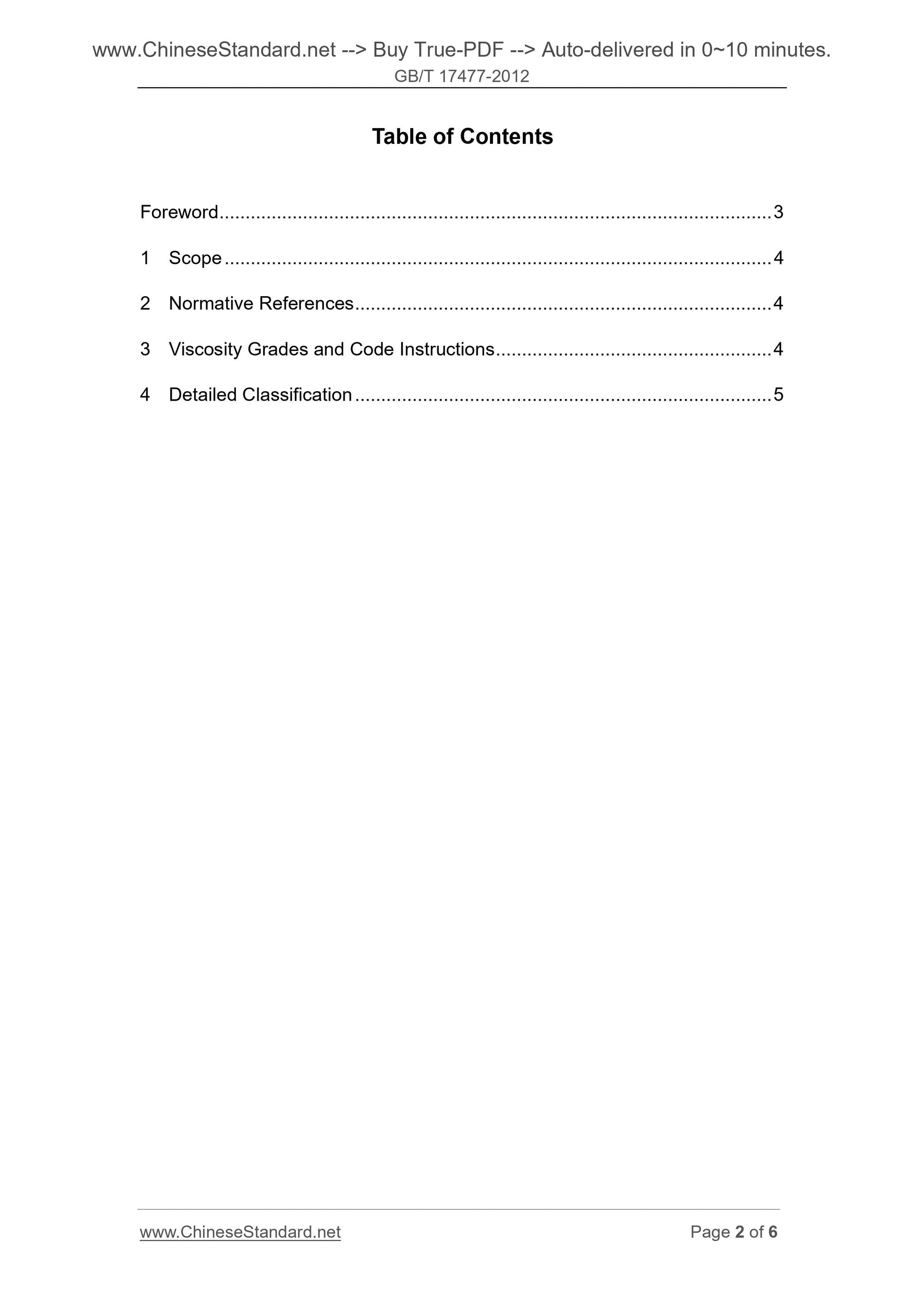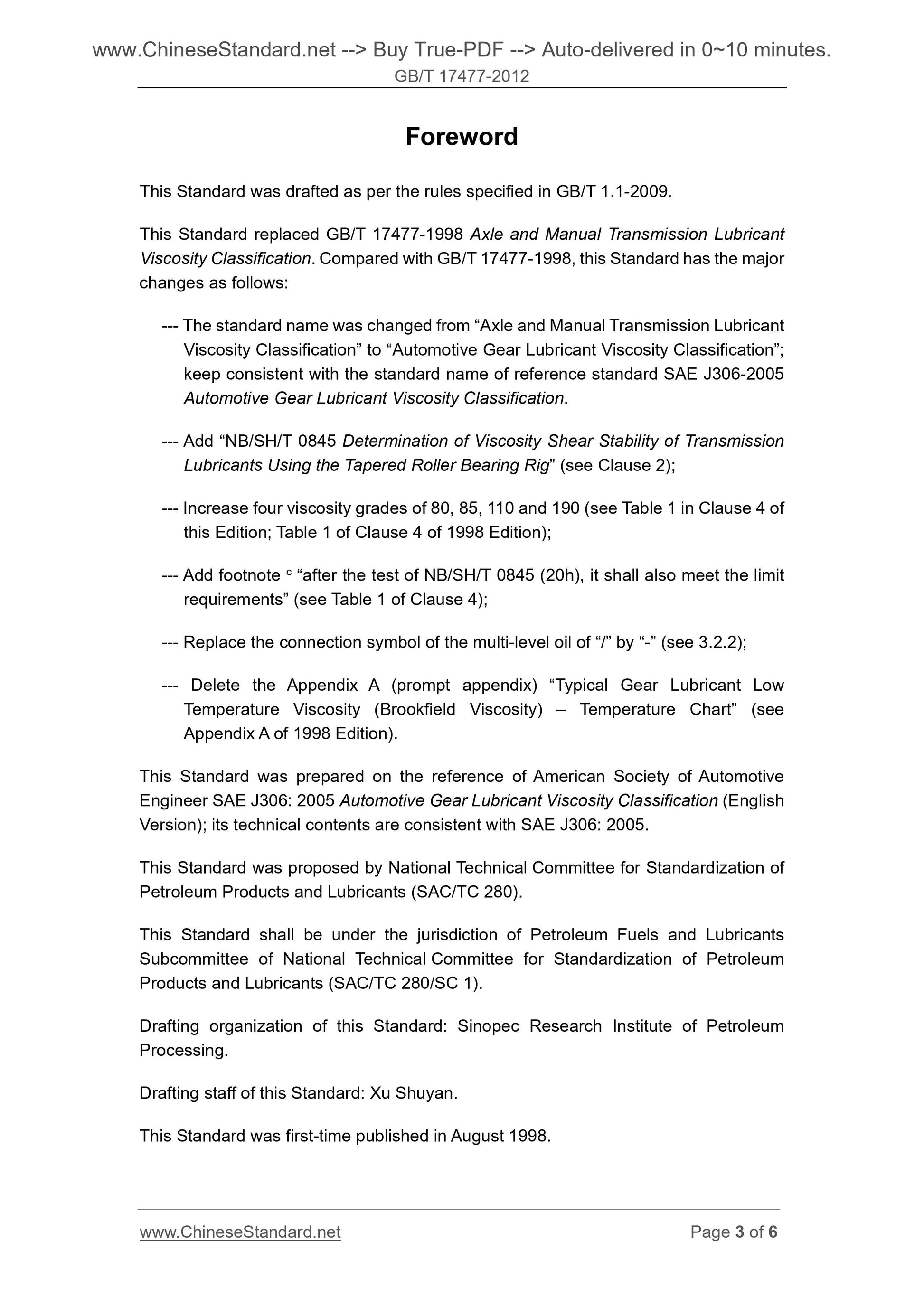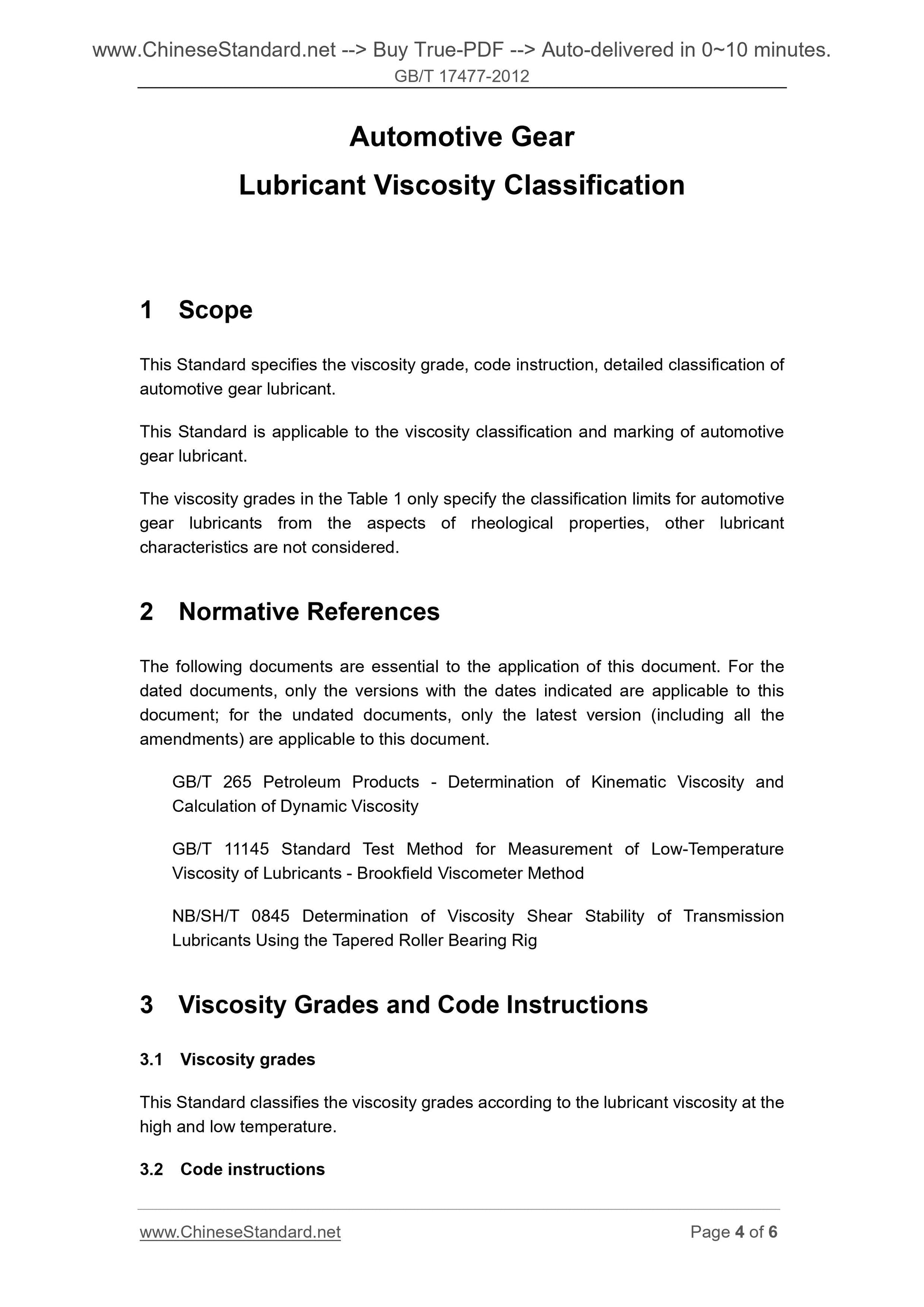1
/
of
4
www.ChineseStandard.us -- Field Test Asia Pte. Ltd.
GB/T 17477-2012 English PDF (GB/T17477-2012)
GB/T 17477-2012 English PDF (GB/T17477-2012)
Regular price
$70.00
Regular price
Sale price
$70.00
Unit price
/
per
Shipping calculated at checkout.
Couldn't load pickup availability
GB/T 17477-2012: Automotive gear lubricant viscosity classification
Delivery: 9 seconds. Download (and Email) true-PDF + Invoice.Get Quotation: Click GB/T 17477-2012 (Self-service in 1-minute)
Newer / historical versions: GB/T 17477-2012
Preview True-PDF
Scope
This Standard specifies the viscosity grade, code instruction, detailed classification ofautomotive gear lubricant.
This Standard is applicable to the viscosity classification and marking of automotive
gear lubricant.
The viscosity grades in the Table 1 only specify the classification limits for automotive
gear lubricants from the aspects of rheological properties, other lubricant
characteristics are not considered.
Basic Data
| Standard ID | GB/T 17477-2012 (GB/T17477-2012) |
| Description (Translated English) | Automotive gear lubricant viscosity classification |
| Sector / Industry | National Standard (Recommended) |
| Classification of Chinese Standard | E31 |
| Classification of International Standard | 75.100 |
| Word Count Estimation | 5,559 |
| Older Standard (superseded by this standard) | GB/T 17477-1998 |
| Quoted Standard | GB/T 265; GB/T 11145; NB/SH/T 0845 |
| Regulation (derived from) | National Standards Bulletin No. 28 of 2012 |
| Issuing agency(ies) | General Administration of Quality Supervision, Inspection and Quarantine of the People's Republic of China, Standardization Administration of the People's Republic of China |
| Summary | This standard specifies the automotive gear lubricant viscosity grade, code descriptions and detailed classification. This standard applies to automotive gear lubricant viscosity classification and marking. Table 1 only from the rheological nature of the |
Share
